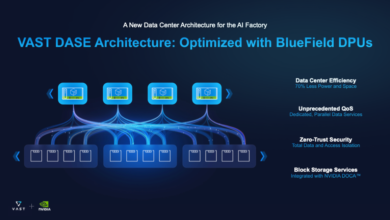Mastering a multi-cloud environment – KPMG Netherlands

KPMG global specialists are providing insightful guidance on the design and implementation of effective multi-cloud environments that can meet the specific and unique needs of businesses. Key considerations and digital solutions that can help underpin success include:
Multi-cloud architecture – It is essential to understand the challenges that exist while creating a robust multi-cloud architecture. You need to incorporate the right set of tools and technologies to support workload placement across diverse platforms and services. A solid operating model to effectively manage multi-cloud use is imperative – breaking it down into process security, technology, financial operations and people and skills. One of the keys is aligning IT service management with your multi-cloud operating model – implementing the right technology to effectively operate, manage, monitor and secure resources and services among providers – from data management, governance and security to vendor licenses, contracts and more.
Resilience – Establishing resilience in a multi-cloud environment is critical to disruption prevention and recovery. You need a rapid, flexible and scalable environment that provides both zonal and regional resilience. You should also factor in the essential need for an appropriate recovery-time objective (RTO) and recovery-point objective (RPO) to help ensure they do not break down when a service spans multiple clouds.
In today’s fast-changing and threat-laden environment, a new approach to resilience is indispensable – one that helps ensure your ability to ‘bounce back’ quickly from disruptions and maintain application availability. New functional capabilities and skills to embed resilience through design is the way forward and it will likely require businesses to give resilience greater priority as they invest in innovation.
Security – Leading businesses are recognizing the need to design and implement a modern multi-cloud security model across applications and data governance, one featuring a common access-control model across platforms. This includes automation of key capabilities such as identity and access management, as well as automation of compliance for continuous monitoring, reporting and testing of capabilities. Periodic testing is no longer sufficient as threats soar in frequency, impact and cost to the organization. Automation also offers revolutionary new capabilities to predict trouble before it strikes in today’s bold new reality.
Cost optimization – Businesses need to rethink budget planning and financial control as the pace of change accelerates. For multi-cloud, you need to invest in new cost management and visibility tools that can establish and maintain centralized governance and avoid cost overruns. Amid different pricing models and various mechanisms to control costs among diverse cloud service providers, balancing the value of workloads with associated cloud costs is essential. Ask yourself what the total cost of hosting an application is. Is it going down or up – and what can you do to drive it down? Can the business reduce some of the variability that exists in current costs?
Governance – Unified governance in a multi-cloud environment can be pivotal to success, catering to uniform application of policies, configurations, compliance and management. It’s essential to have an effective workload placement strategy in place – establishing clear guidance, for example providing insights on which cloud is most appropriate for a specific need. Governance needs to be strong to manage how diverse clouds and applications frequently talk to each other. Effective service-level agreements are also critical, along with a sharp focus on skillsets and operational costs as applications migrate among platforms.
Operations, SLA, license management – To operate effectively in a multi-cloud environment, businesses need to invest in monitoring and logging tools that enable appropriate management of operational, licensing and service level agreements needs and issues.



